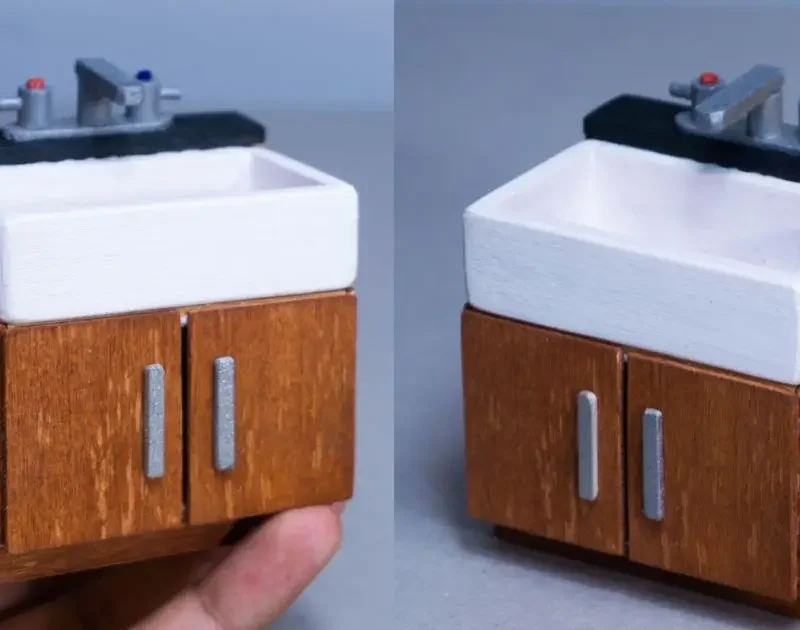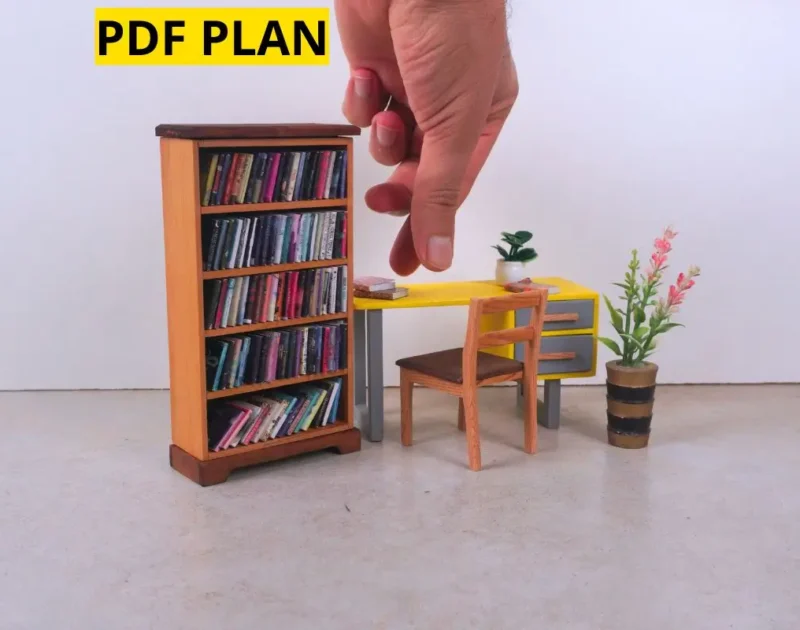Creating miniature furniture is an incredibly rewarding hobby that combines precision craftsmanship with artistic creativity. Whether you’re building dollhouse accessories or crafting detailed scale models, the world of miniature furniture offers endless possibilities for expression. However, many beginners stumble into common pitfalls that can turn an exciting project into a frustrating experience.
Understanding these frequent mistakes can save you time, materials, and countless hours of rework. From scaling issues to assembly problems, these errors are entirely preventable with the right knowledge and approach. Let’s explore the five most common mistakes that new miniature furniture makers encounter and learn how to avoid them.
1. Not Using the Correct Scale
Scale accuracy is the foundation of successful miniature furniture creation. Many beginners underestimate the importance of maintaining consistent proportions throughout their projects. The most common scales for miniature furniture include 1:12 (one inch equals one foot), 1:24, and 1:48, with 1:12 being the standard for most dollhouses.
Working without proper scale measurements leads to furniture pieces that look awkward or unrealistic when placed together. A dining table might appear too large for its chairs, or a bookshelf could dwarf an entire room. This mistake often occurs when crafters eyeball measurements instead of using proper scaling tools.
To avoid this error, invest in a quality scale ruler and create a reference chart for your chosen scale. Measure real furniture pieces and convert them accurately. Keep detailed notes and sketches with exact measurements before beginning any project. Remember that even small deviations from scale can make your miniature furniture appear unprofessional or toy-like rather than realistic.
2. Lack of Patience or Rushing the Process
Miniature furniture crafting demands patience and attention to detail. The small scale means that every cut, joint, and finish must be executed with precision. Rushing through steps or trying to complete projects too quickly inevitably leads to mistakes that compromise the final result.
Common signs of rushing include uneven cuts, poorly aligned joints, and inadequate drying time between steps. When working with miniature furniture, each component must be perfect because there’s little room to hide imperfections. A gap that might be acceptable in full-size furniture becomes glaringly obvious in miniature work.
Develop a methodical approach to your projects. Break complex pieces into smaller, manageable tasks and tackle them one at a time. Allow proper drying time for glues and finishes, even if it means extending your project timeline. Set realistic expectations for completion dates and resist the urge to skip steps or rush critical processes.
3. Not Planning or Sketching First
Jumping directly into cutting and assembling without proper planning is a recipe for disaster in miniature furniture making. The precision required at this scale means that every measurement, joint, and assembly sequence must be carefully considered beforehand.
Many beginners start with enthusiasm but quickly realize they haven’t thought through the construction sequence. This leads to situations where parts don’t fit properly, joints are inaccessible for gluing, or finishing becomes impossible after assembly. Without proper planning, you might discover that a drawer front needs to be attached before the sides, or that a back panel blocks access to internal components.
Create detailed sketches from multiple angles before beginning any project. Include exact measurements, joint locations, and assembly sequences. Consider how each piece will be finished and whether all surfaces will be accessible during construction. Many experienced miniaturists create full-size patterns or templates to ensure accuracy throughout the building process.
4. Rushing the Assembly
Assembly is where careful preparation pays off, but it’s also where many miniature furniture projects fail due to impatience. The small scale requires extra care during gluing and clamping, and rushing this process often results in weak joints, misaligned parts, or visible glue marks.
Working with tiny components means you have limited time to position parts correctly before adhesives set. Many beginners apply too much glue, creating squeeze-out that’s difficult to clean in tight spaces. Others don’t allow adequate time for joints to cure properly before moving to the next step.
Practice dry-fitting all components before applying any adhesive. This helps identify potential problems and ensures smooth assembly. Use minimal amounts of appropriate adhesives and have cleanup tools ready. Consider using temporary clamps or jigs to hold parts in position while joints cure. Most importantly, work on one joint at a time rather than trying to assemble entire pieces simultaneously.
5. Skipping Proper Sanding
Sanding might seem less critical at miniature scale, but it’s actually more important than ever. Surface imperfections that would be barely noticeable on full-size furniture become major flaws on miniature furniture. Tool marks, rough edges, and uneven surfaces destroy the illusion of realism that makes miniature work so appealing.
Many beginners either skip sanding entirely or don’t progress through fine enough grits. Others sand too aggressively, removing detail or creating unwanted roundovers on sharp edges. The small scale means that finishing flaws are magnified rather than hidden.
Start with appropriate grit sandpaper for your material and progress through increasingly fine grits. Pay special attention to end grain and joint lines. Use sanding blocks or custom-shaped tools to maintain crisp edges and flat surfaces. Always sand in the direction of the grain and remove all dust between grits.
Conclusion
Creating beautiful miniature furniture requires patience, planning, and attention to detail. By avoiding these five common mistakes, beginners can dramatically improve their results and enjoy the crafting process more fully. Remember that miniature work is about precision rather than speed, and every step in the process contributes to the final quality of your piece.
Take time to learn proper techniques, invest in quality tools appropriate for the scale, and don’t be afraid to practice on simple projects before attempting complex pieces. With careful attention to these fundamentals, you’ll be creating museum-quality miniature furniture that brings joy for years to come.




